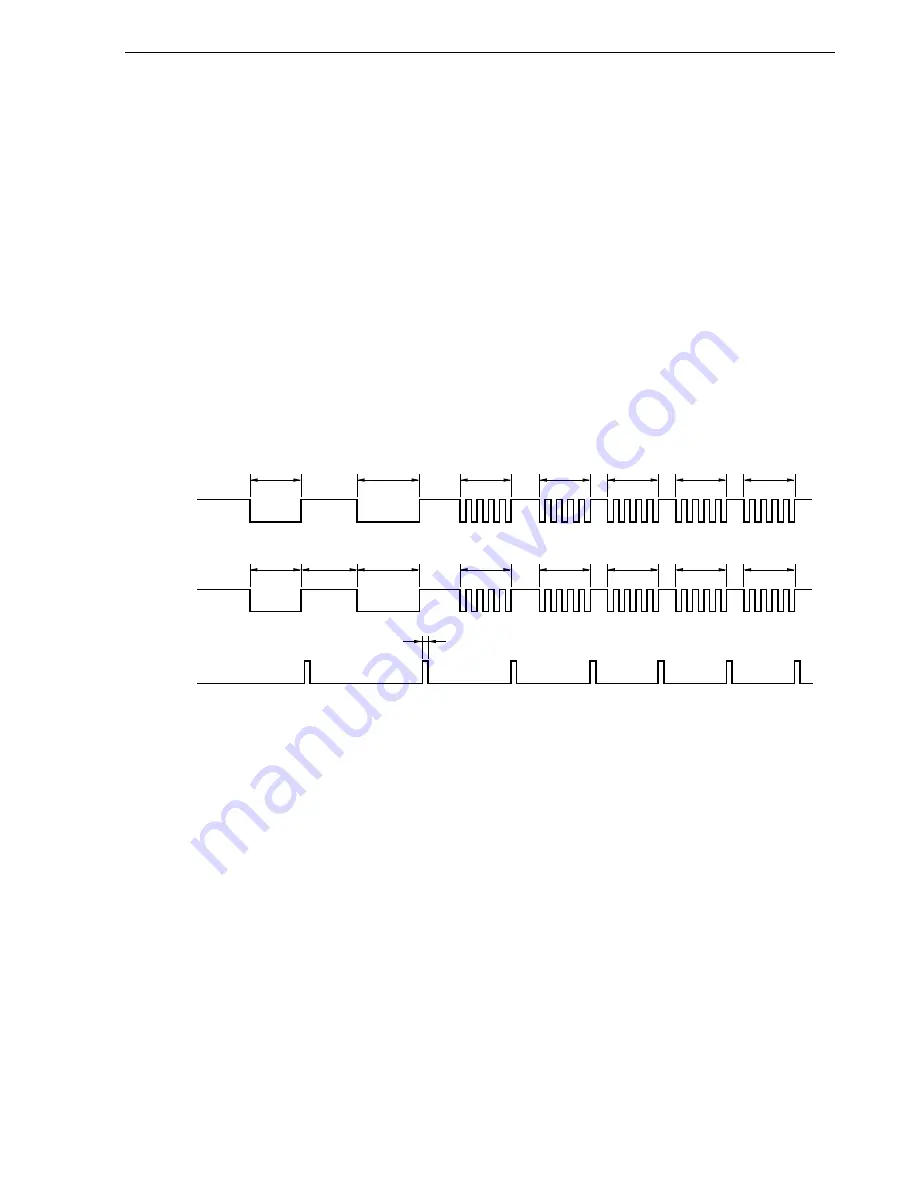
CHAPTER 14 SERIAL INTERFACE UART6
Preliminary User’s Manual U16315EJ1V0UD
269
Remark
LIN stands for Local Interconnect Network and is a low-speed (1 to 20 kbps) serial communication
protocol intended to aid the cost reduction of an automotive network.
LIN communication is single-master communication, and up to 15 slaves can be connected to one
master.
The LIN slaves are used to control the switches, actuators, and sensors, and these are connected to the
LIN master via the LIN network.
Normally, the LIN master is connected to a network such as CAN (Controller Area Network).
In addition, the LIN bus uses a single-wire method and is connected to the nodes via a transceiver that
complies with ISO9141.
In the LIN protocol, the master transmits a frame with baud rate information and the slave receives it and
corrects the baud rate error. Therefore, communication is possible when the baud rate error in the slave
is
±
15% or less.
Figures 14-1 and 14-2 outline the transmission and reception operations of LIN.
Figure 14-1. LIN Transmission Operation
Sleep
bus
TX6
INTST6
Note 4
Wakeup
signal frame
Tuning
break field
Tuning field
Match field
Data field
Checksum
field
Data field
8 bits
Note 3
Note 1
13-bit
Note 2
SBF
transmission
55H
transmission
Data
transmission
Data
transmission
Data
transmission
Data
transmission
Notes 1.
The interval between each field is controlled by software.
2.
The tuning break field is output by hardware. The output width is equal to the bit length set by bits 4 to
2 (SBL62 to SBL60) of asynchronous serial interface control register 6 (ASICL6). If the output width
needs to be adjusted more accurately, use baud rate generator control register 6 (BRGC6).
3.
The wakeup signal frame is substituted by 80H transfer in the 8-bit mode.
4.
INTST6 is output on completion of each transmission. It is also output when SBF is transmitted.
















































